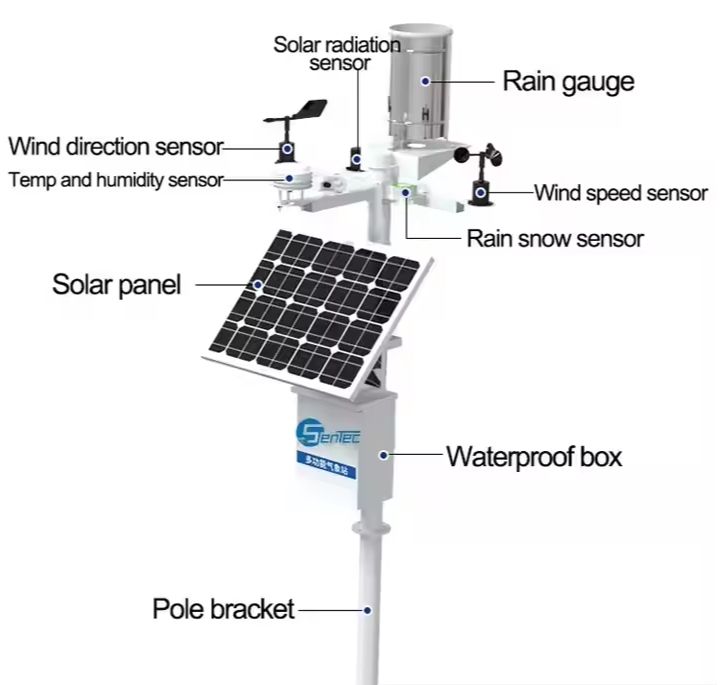Radar level gauges are essential instruments used in various industries to accurately measure the level of liquids or solids in tanks or vessels. These gauges rely on radar technology to provide real-time data, making them highly reliable and efficient. When it comes to corrosive media, however, special care must be taken to ensure the longevity and accuracy of radar level gauges.
Understanding Corrosive Media and Its Impact on Equipment
Corrosive media refers to substances that have the ability to deteriorate or destroy materials they come into contact with. This can include chemicals, acids, or other aggressive liquids commonly found in industrial processes. When radar level gauges are exposed to corrosive media, they can experience rapid deterioration, resulting in inaccurate measurements and potential equipment failure.
Common Challenges Faced in Corrosive Media Environments
Corrosive media environments pose several challenges for radar level gauges. One of the primary challenges is the degradation of materials used in the construction of the gauges. Corrosive substances can cause erosion, pitting, or cracking of the gauge’s components, compromising its integrity and accuracy. Another challenge is the buildup of corrosive deposits on the gauge’s antennas, which can interfere with the radar signals and result in incorrect level readings.
Precautions to Take Before Installing a Radar Level Gauge in Corrosive Media
It is often encountered that there are corrosive media in the tank, such as sulfuric acid, hydrochloric acid, nitric acid and other media. The following introduces the matters needing attention when measuring corrosive media with the radar level gauge.
1. Select the appropriate antenna form and material of the radar level gauge according to the corrosive strength of the medium
The medium to be measured is relatively corrosive, and an antenna with strong corrosion resistance must be selected. The antenna with strong corrosion resistance is installed in a jar, which can resist the long-term corrosion of sulfuric acid and other media and is durable for a long time.
Usually when measuring corrosive media, the radar level gauge will choose PTFE antenna material.
2. Determine the temperature properties of the measuring medium
The temperature of the measured medium is high, and the medium will produce gasification or steam in the tank, and the gasification or steam will affect the waveband propagation of the radar level gauge.
The second is that the temperature is too high. The antenna in front of the liquid level gauge has a temperature range. Generally, the radar level gauge can withstand a temperature of 130 °C. If the temperature is too high, it is necessary to choose high temperature resistant materials and do heat dissipation.
3. On-site installation requirements
Since the on-site medium is particularly corrosive, after installation and debugging, all cable inlets must be sealed with waterproof glue, and the upper cover screws must be tightened. At this time, it is best to use a thick plastic bag to wrap the head of the entire radar level gauge, which is a low-cost and effective method. The installation angle should consider the absence of leakage.
4. Other attention requirements
Because of the corrosiveness of the on-site measurement medium, the flange selection of the radar level gauge must consider corrosiveness, and the accessories, meter heads, and other materials must consider corrosiveness.
Case Studies and Examples of Successful Radar Level Gauge Protection in Corrosive Media
Several industries have successfully protected radar level gauges in corrosive media environments by implementing the aforementioned measures. For example, in a chemical manufacturing plant, the installation of a radar level gauge with a stainless steel housing and PVDF coating significantly extended its lifespan and ensured accurate measurements, even when exposed to highly corrosive acids. Similarly, in a wastewater treatment facility, regular cleaning and maintenance of the gauge’s antennas prevented buildup and maintained reliable performance.
Conclusion: Ensuring Long-lasting Performance of Radar Level Gauge in Corrosive Media
In conclusion, safeguarding radar level gauges in corrosive media environments is essential for maintaining their accuracy, reliability, and longevity. By understanding the impact of corrosive media, taking necessary precautions during installation, implementing proper maintenance and cleaning procedures, and using recommended materials and coatings, industries can protect their investment and ensure the continuous and accurate measurement of liquid or solid levels. Regular monitoring and troubleshooting, along with the use of case studies and examples, can provide valuable insights for optimizing the performance of radar level gauges in corrosive media applications. Remember, by prioritizing the protection and care of these gauges, industries can safeguard their investment and ensure uninterrupted operations.
CTA: For more information on how to protect your radar level gauges in corrosive media environments, contact our experts today.




